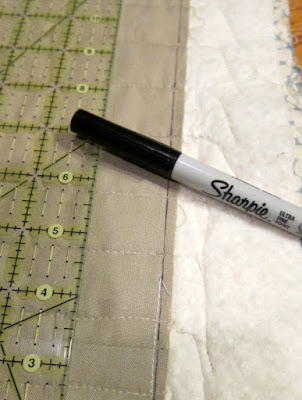Tanner Reunion . . . finished!
stats:
65" x 65"
25 - 11.5" blocks
fabric is Reunion by Sweetwater for Moda, jelly rolls and fat quarters
Warm and Natural
organic/straight line quilting
Picking a quilting design is almost as hard as designing the quilt. There are so many fun options!!

Jacquie from Tallgrass Prairie Studio has a great blog with lots of good information, pictures and tutorials. I studied her tutorial on Organic Line Quilting before quilting this quilt. Mine doesn't look quite organic as hers, it probably borders on the line of straight line quilting.
It takes a little practice on paper, and even chalking onto your quilt what you're going to write. It reminded me of typing class in 7th grade, a gazillion years ago, before computers. Remember figuring out how to center your title on your page? Count total number of letters, divide by 2 . . .

I'll stick with names for now.

I love the back almost as much as the front. For vivid colored pictures, leave your quilt a bit damp.
My next project to finish is the wall hanging that goes with this quilt, see below left.
YOU MAY BE INTERESTED IN:
 |
| Reunion Wall hanging |
 |
| new binding method |


































